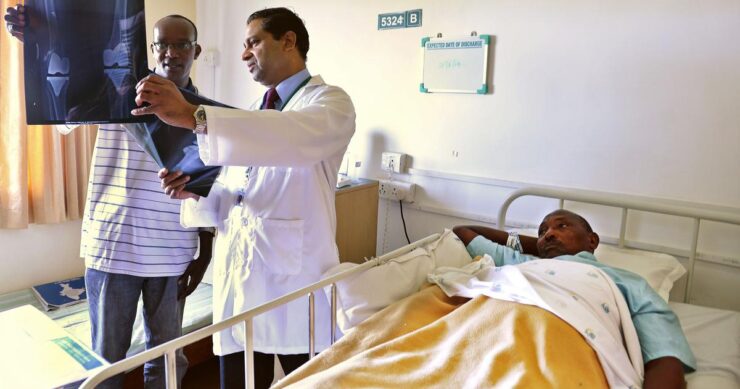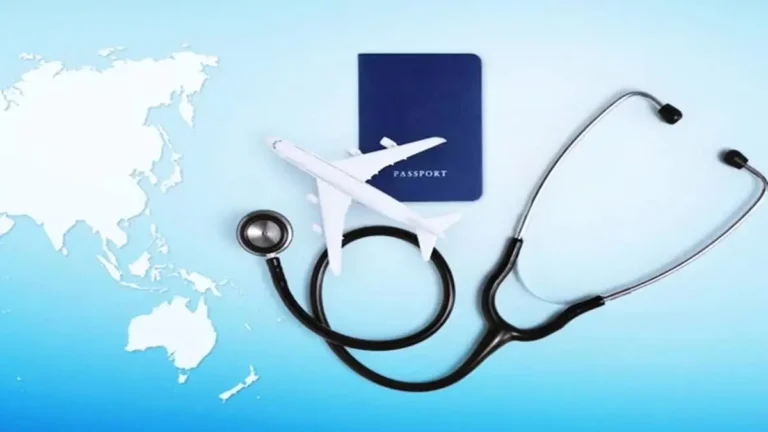The growing demand for affordable and high-quality medical care has given rise to a phenomenon known as medical tourism. With rising healthcare costs, many people are seeking alternative options for medical treatments, either within their own country (national medical tourism) or by traveling to other countries (international medical tourism).
But which is better: national or international medical tourism? In this article, we will explore the benefits and drawbacks of both options, and provide insights to help potential medical tourists make an informed decision.
National Medical Tourism

National medical tourism, also known as domestic medical tourism, refers to the practice of seeking medical treatment within one’s own country but in a different region or state. This type of medical tourism is increasingly popular, as it allows patients to access high-quality healthcare services like orthopedic surgeons (a good example of one is Integrated Orthopedics), non-FDA approved treatments, and acclaimed medical specialists, at more affordable prices or if the treatment is not available elsewhere compared to their home region.
Advantages of National Medical Tourism
- Lower travel costs: One of the most apparent benefits of national medical tourism is reduced travel expenses. Since patients are traveling within their own country, transportation costs are generally lower compared to international medical tourism. Additionally, patients may be more familiar with the local transportation options, making it easier to navigate and reach their medical destination.
- Familiarity with language and culture: When seeking medical treatment within one’s own country, patients can avoid potential language barriers and cultural misunderstandings. This can lead to a smoother and more comfortable experience throughout the treatment process, as patients are better able to communicate with medical staff and understand the nuances of the local healthcare system.
- Access to home country legal protection: In case of medical malpractice or any other legal dispute, patients who opt for national medical tourism are protected by their home country’s laws and regulations. This provides a sense of security and assurance, as patients know they can rely on their own legal system for recourse if necessary.
- Insurance coverage: Many domestic health insurance plans provide coverage for medical treatment within the country, even if it’s in a different region. This can help offset the costs of medical procedures, making national medical tourism more financially viable for many patients.
Disadvantages of National Medical Tourism
- Limited options for specialized care: While national medical tourism offers a wider range of healthcare options than those available in one’s immediate region, it may still be limited compared to international medical tourism. Patients seeking highly specialized or cutting-edge treatments may find that these options are not available within their own country.
- Variability in quality of care: Although national medical tourism can provide access to more affordable healthcare, the quality of care can vary greatly between regions. This can make it challenging for patients to identify the best facilities and providers for their specific needs.
International Medical Tourism

International medical tourism involves traveling to another country to receive medical treatment. Patients may choose this option for various reasons, including lower costs, access to specialized care, or the opportunity to combine medical treatment with a vacation.
Advantages of International Medical Tourism
- Access to specialized care: One of the most significant benefits of international medical tourism is the opportunity to access highly specialized or innovative treatments that may not be available in one’s home country. Many countries are renowned for their expertise in specific medical fields, allowing patients to receive world-class care.
- Cost savings: In many cases, international medical tourism can provide substantial cost savings, particularly for patients from countries with high healthcare costs. The lower cost of living and more affordable medical care in some countries can make international medical tourism a financially attractive option.
- Combining medical treatment with travel: International medical tourism offers the unique opportunity to combine medical treatment with travel experiences. Patients can explore new cultures, enjoy local cuisine, and engage in tourist activities while receiving medical care.
Disadvantages of International Medical Tourism

- Language and cultural barriers: One of the main challenges of international medical tourism is the potential for language and cultural barriers. Miscommunication can lead to confusion and complications during the treatment process, making it essential for patients to research and prepare for any language or cultural differences in their chosen medical tourism destination.
- Travel expenses: International medical tourism often involves higher travel expenses compared to intranational medical tourism. Patients need to factor in the costs of flights, accommodation, and local transportation when considering this option.
- Limited legal protection: In case of medical malpractice or other legal disputes, patients may not have the same level of legal protection as they would in their home country. Navigating a foreign legal system can be challenging and time-consuming, and patients may have limited recourse in cases of medical negligence.
- Insurance coverage: Most domestic health insurance plans do not cover medical treatment in other countries, which can make international medical tourism more expensive for patients. Some patients may need to purchase additional travel medical insurance to cover potential expenses.
Choosing between international and intranational medical tourism depends on individual preferences, needs, and circumstances. National medical tourism offers the benefits of lower travel costs, familiarity with language and culture, and access to home country legal protection. However, it may be limited in terms of specialized care options and may present variability in the quality of care.
On the other hand, international medical tourism provides access to specialized and innovative treatments, potential cost savings, and the opportunity to combine medical care with travel experiences. It does come with the challenges of language and cultural barriers, higher travel expenses, and potentially limited legal protection.
Potential medical tourists must carefully weigh the pros and cons of both options and consider their specific needs, budget, and comfort level when making a decision. Regardless of the choice, thorough research and planning are essential to ensure a safe and successful medical tourism experience. By understanding the advantages and drawbacks of both international and intranational medical tourism, patients can make the best decision for their unique situation and enjoy the benefits of accessible, high-quality medical care.
Related Posts:
- 20 Best Gaming Headset Under 50$ 2024 - for PC, PS4,…
- Top Career Advancement Resources for Healthcare…
- Top 10 Best Scrubs For Women 2024 - Pants for Nurses…
- The Most Disruptive Digital Technologies in…
- 12 Best Car Wax For Black Cars 2024 - Protection and…
- 10 Best Climbing Harness of all Time 2024 - Opinion…







